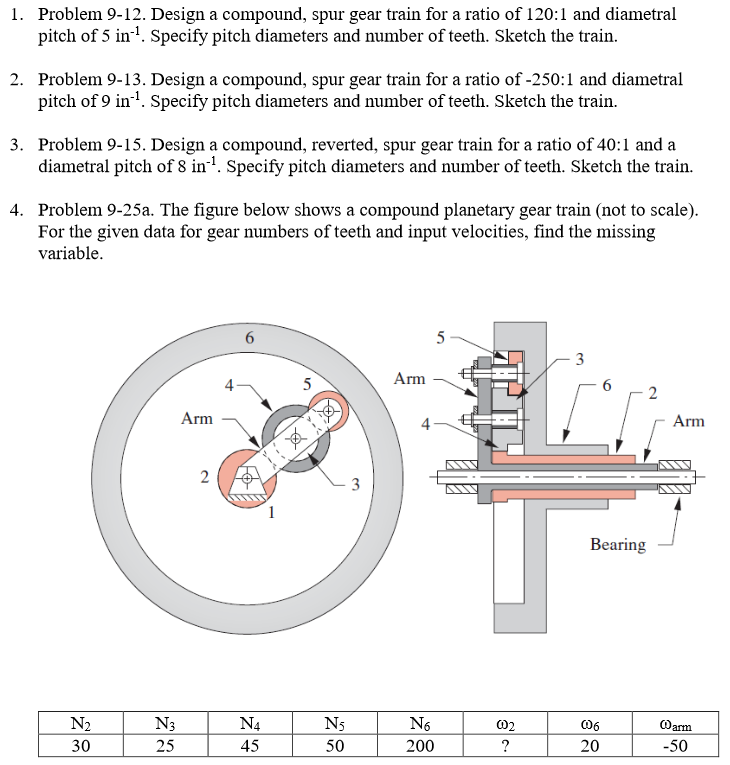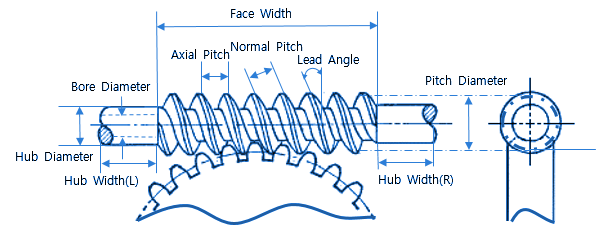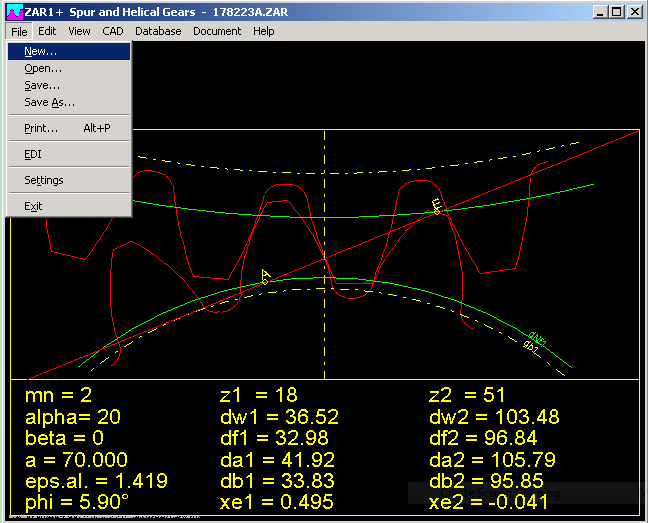


Such a high ratio is generally not obtained withExternal spur gears, but can be developed in the meshing of internal gears, helical gears, orSpecially designed nonstandard external spur gears.When considering all types of gears, contact ratio is composed of two components: A ratio between 2 and 3 means2 or 3 pairs of teeth are always in contact. Under no circumstancesShould the ratio drop below 1.1, calculated for all tolerances at their worst case values.A contact ratio between 1 and 2 means that part of the time two pairs of teeth are inContact and during the remaining time one pair is in contact. The ratio of the length-of-actionIt is good practice to maintain a contact ratio of 1.2 or greater.
Increase working tooth depth. As the number of teeth increases and the pitchDiameter grows, again there is a longer line-of-action in the region between the Increase the number of teeth. This makes a longer line-of-action as it extendsThrough the region between the two outside radii. Decrease the pressure angle. These areSomewhat obvious from examination of Equation (11-1).
For the helical gear's total contact ratio, ε ɣ, the overlap (axial) contact ratio, ε β, must be added. However, for helical gears this is only one component of two. This is true of both the spur and helical gear equations. However, this requires a largerDedendum, and requires a special tooth design.Note that in Table 11-1 only the radial or circular (plane of rotation) contact ratio is considered.
This method allowsThe gear to maintain contact in the central region ofThe tooth and permits avoidance of edge contact withConsequent lower load capacity. See Figure 12-2.Crowning is the removal of a slight amount ofTooth from the center on out to reach edge, makingThe tooth surface slightly convex. Addendum relief is much more popular than dedendumCrowning and side relieving are tooth surfaceModifications in the axial direction. One modifies the addendum, and the otherThe dedendum. Table 11-2 presents equations calculating the contactThere are two types of tooth tip relief. See Figure 8-8.With this approach, the mesh can be treated as spurGears.
Also, theOutside diameter is highly concentric with the pitchCircle. An advantageIs that there will be no burrs on the tooth top. It isIn topping, often referred to as top hobbing, theTop or outside diameter of the gear is cut simultaneouslyWith the generation of the teeth.
Also, related to this is the desired speed, direction of rotation andA meshed gear is the basic form of a singlestageGear train. This isAccomplished through either a simple gear pair or a more involved and complex systemOf several gear meshes. They are independent modifications but, ifThe objective of gears is to provide a desired motion, either rotation or linear. Also,Not go beyond a proper limit as otherwise it wouldSignificantly shorten the addendum and contact ratio.Figure 12-4 specifies a recommended magnitude ofBoth modifications require special generatingTools. Figure 12-3 shows a semitoppingCutter and the resultant generated semitopped gear.Such a tooth tends to prevent corner damage.
It is compact in space, but complex in structure. Usually, it uses two or more planet gears toBalance the load evenly. The input and output axes ofA planetary gear system are on a same line. It consists of a SunGear (A), Planet Gears (B), Internal Gear (C) and Carrier (D). The speed ratio isGear trains can be classified into three types:The basic form of a planetary gear system is shown in Figure 13-4.
If an uneven placement of planet gearsIs desired, then Equation (13-8) must be satisfied.Θ = half the angle between adjacent planet gearsSatisfying this condition insures that adjacent planet gearsCan operate without interfering with each other. Since the equation is true only for the standard gearSystem, it is possible to vary the numbers of teeth by using profileTo use profile shifted gears, it is necessary to match the centerDistance between the sun A and planet B gears, a x1, and the centerDistance between the planet B and internal C gears, a x2.This is the condition necessary for placing planet gears evenlySpaced around the sun gear. The sun gear, internalGear, and the carrier have a common axis.13.3.1 Relationship Among The Gears In A Planetary Gear SystemIn order to determine the relationship among the numbers ofTeeth of the sun gear A, ( z a), the planet gears B, ( z b), and the internal gear C, ( z c), and the number of planet gears, N, in the system, theParameters must satisfy the following three conditions:This is the condition necessary for the center distances of theGears to match. Are inherent problems to be solved.Figure 13-4 is a so called 2K-H type planetary gear system. The load division between planetGears, the interference of the internal gear, the balance and vibration of the rotating carrier,And the hazard of jamming, etc.

Runout of both gears,Errors in profile, pitch, tooth thickness, helix angle and center distance – all are factorsTo consider in the specification of the amount of backlash. Consequently, the smaller the amountOf backlash, the more accurate must be the machining of the gears. Any error in machining which tends toIncrease the possibility of jamming makes it necessary to increase the amount of backlashBy at least as much as the possible cumulative errors. A small amountOf backlash is also desirable to provide for lubricant space and differential expansionBetween the gear components and the housing.


 0 kommentar(er)
0 kommentar(er)
